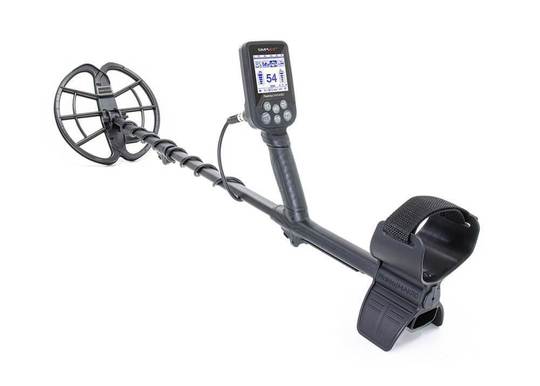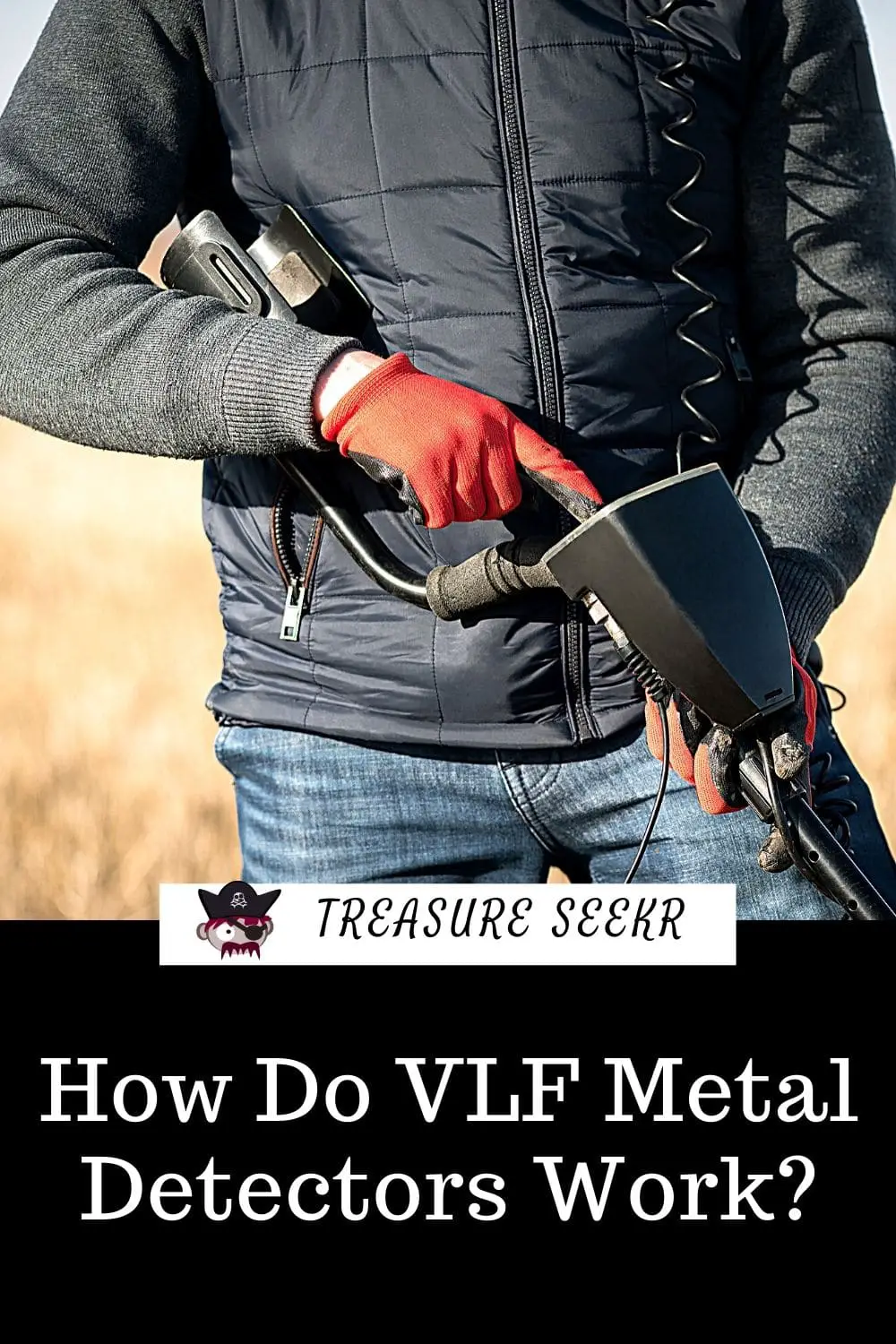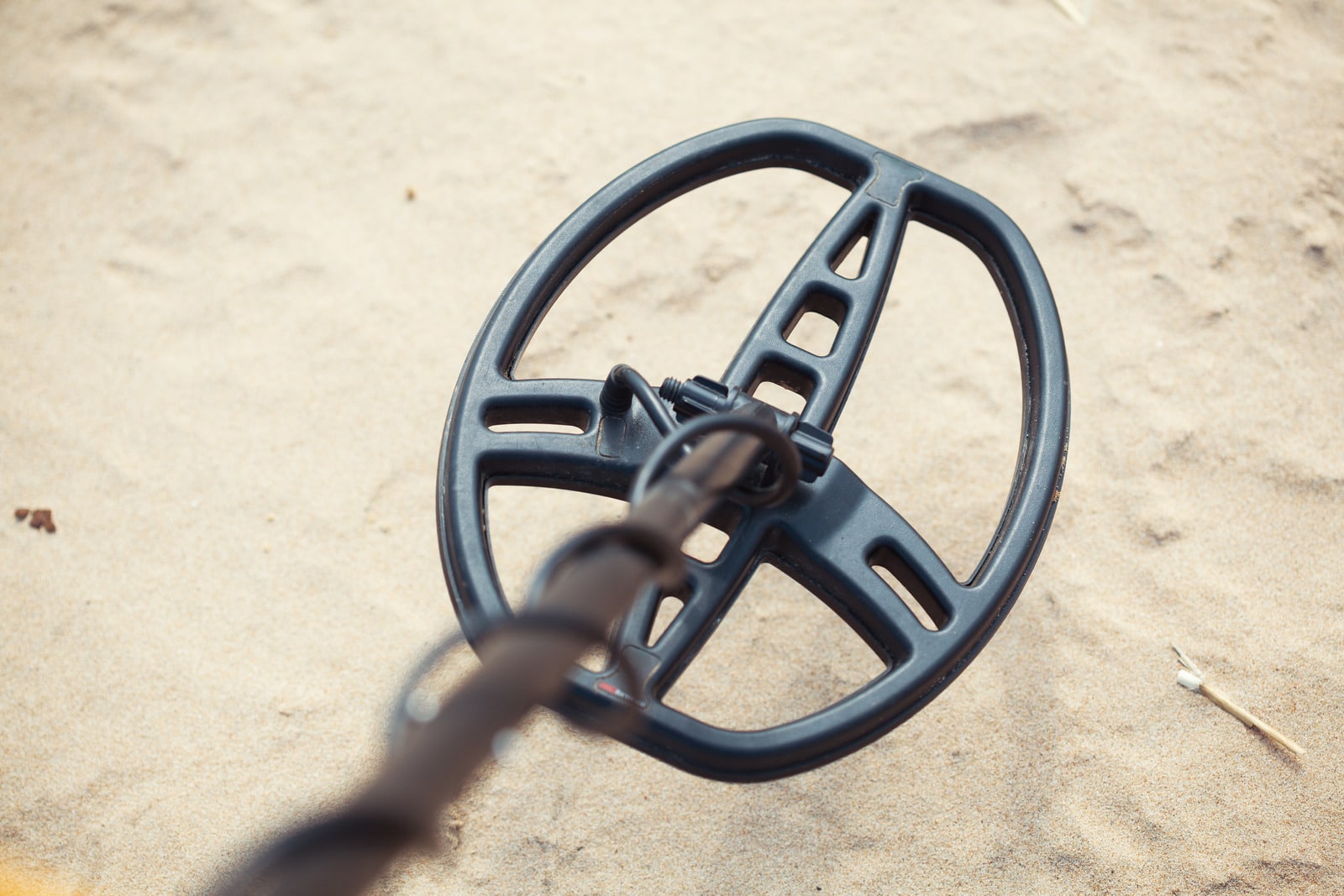Metal detecting can be fun, exciting and lucrative! But before you start metal detecting you will want to know the different types of metal detectors and their applications.
So, what are the different types of metal detectors? There are 3 main types of metal detectors.
- Beat-Frequency Oscillation (BFO)
- Very Low-Frequency (VLF)
- Pulse Induction (PI)
In this article, I will explain all three types of metal detectors in detail and you will learn which one would be the best to use for certain metals and environments. Once you are done reading this article you will have a clear understanding of the different types of metal detectors and what circumstances to use each one in.
Beat-Frequency Oscillation (BFO)

The first type of metal detector we will look at is called beat-frequency oscillation or BFO for short. BFO’s are the most simple of all the metal detectors and the cheapest. You will find these metal detectors in stores like Radio Shack.
BFO’s consist of two copper coils, a large coil called the search coil and the other is a smaller coil located in the control box of the metal detector. They are both connected to their own oscillators.
One of the oscillators is called the search and the second is a reference oscillator that sends thousands of pulses of alternating electrical current into the ground. These pulses create radio waves as they pass through the coils.
The two coils produce two separate frequencies between them and when the coils pass over metal in the ground there is an interruption of the transmission of the signals which tells you that you have located metal.
These coils create an electrical current and when that current is passed over a metal object the current produced in the coils creates an alternating magnetic field around the metal object. Once the metal object is located the metal detector emits sounds that alert you to the find.
Beat frequency oscillation is also used in radio transmission devices like ham radios.
Although BFO metal detectors were once a popular metal detector they are more of a collector’s item because more technologically advanced metal detectors are being made now. And I will explain about these other options in further detail next.
Very Low-Frequency (VLF)

The Very Low-frequency or VLF metal detector is probably the most popular of all metal detectors from novice to experienced detectorists. This is because of the advanced technology behind it.
These are very accurate metal detectors and on most models can decipher between the different metals. Of course the more expensive you go the more bells and whistles that these metal detectors will have on them.
One downfall of VLF detectors is that minerals in the soil can interfere with the detection process but they can easily tell the junk from the treasure. Although higher-end models will usually have adjustments for ground minerals.
 How Do VLF Metal Detectors Work?
How Do VLF Metal Detectors Work?
VLF detectors come with two coils that work together. One of the coils is called the transmitter that gives off a potent electrical current. The second coil is called a receiver that as the name suggests receives the transmission from the transmitter coil and then extremely amplifies that transmission.
You essentially get a magnetic field above and two feet below the ground that’s made by the electrical current coming from the transmitter coil. When the magnetic field comes in contact with a metal object that metal object becomes magnetized causing interference that the receiver coil picks up.
That interference that the receiver picked up is sent to the audio system that’s attached to the metal detector and the detectorist can hear that a metal object has been detected. Each kind of metal has a different frequency which is how these metal detectors can decipher the difference in what metals are being detected.
VLF Metal Detectors Make Life Much Easier
With the VLF detectors, you can save so much time because you can tell the difference between metals. You don’t have to waste time digging up ground just to find aluminum foil. You will know what kind of metal you have found before you start digging.
On some of the more expensive models, you can even tell if you have found a coin or ring and also gold. So if you have the money to spend you can really pinpoint what you are searching for saving you tons of time.
Pulse Induction (PI)

Pulse induction metal detectors are popular with underwater detectorists and used at security checkpoints to detect weapons or bombs. PI detectors typically have one, two and sometimes three search coils that are designed to work as one.
The theory of echolocation is used in these metal detectors. How this works is let’s say you yell out in a big room that is empty or has few hard services. The echo from you yelling will not last long because of the lack of hard services. But if you yell in a room that has many hard services the echo will bounce off these hard surfaces and it will last much longer.
That’s how this type of metal detector works. First, you get short pulses of current that are sent through the search coils. Each pulse produces a magnetic field and when the pulse ends you get an electrical spike.
Next another electric pulse is sent out called a reflected pulse which lasts only 30 microseconds and then the process starts over.
When a metal object is detected by a PI detector a pulse is created with a reverse magnetic field. Once the magnetic field collapses a reflected pulse is created. You will be notified that you have found a metal object because the metal object will cause the reflected pulse to take longer to disappear.
A Word About Gold
Gold! Everybody wants to find gold when they are metal detecting. If you are going to focus on gold when your out treasure hunting the best detector would be the pulse induction type. This is because pulse induction detectors use a higher frequency that is needed in the detection of gold.
Pros and Cons Of Pulse Induction Metal Detectors
There are good things about PI detectors and bad things about PI detectors. One of the pros of a PI detector and the reason they are used in underwater metal detecting is they are not affected by salt water and minerals in the sand or the ground.
The problem with pulse induction metal detectors is that they don’t decipher between metals very well. You will have a hard time telling the difference between the junk you sometimes find while metal detecting and the real treasures.
Another downfall of pulse induction detectors is that they are some of the most expensive detectors on the market today.
Conclusion
So there you have it the three main different types of metal detectors. They are all very different but they do one main thing and that is detecting metal some more effectively than others.
In my humble opinion unless you are going to do some underwater metal detecting or want to find pure gold I would go with the very low-frequency metal detectors. VLF’s do a much better job at deciphering between metals and they are priced cheaper.
But on the other hand, if you are in search of mainly gold then there are many pulse induction detectors specifically designed for gold detection. And if you want to detect gold underwater then you definitely want to get a pulse induction metal detector.
It all comes down to what types of metal you want to detect for, your experience in metal detecting, what terrain you are detecting in and at what price point you can afford for a metal detector.
I hope this article helped you understand the difference between metal detectors and hopefully you will be able to make an informed decision of what type of metal detector you want to get.
If you have any questions or comments please leave them in the comments section below. I would love to hear from you.
Until next time Happy Treasure Hunting!

thank you for this great info- the beach is my interest, and glad is my game for searching.
You are welcome, Gary! Thanks for reading!
thank you for all those great tips ,i need all the help that i can get just starting out metal detecting in miami florida beach,hay great job done thanks for your time and have a great day detecting.
You’re welcome, Gary, and thank you! I have a couple of articles with tips on metal detecting at the beach if you’re interested. They are:
Beginners Guide to Beach Metal Detecting
Beach Metal Detecting Tips – 29 Tips For a Successful Hunt
Good luck treasure hunting on the beaches of Florida I’m sure you will locate many great finds.
Thank you for the detailed explanation. I would be interested in finding out where the copper pipes are running in the concrete floor. I do not have a blue print and the previous owner explained that they ran zig zag copper pipes that are part of the heating lines. I do not want to cross it but I need to make new channels for additional lines that will be for floor heating. What would be the best type of detector and method how to figure out where the copper lines are. It is also possible there are rebars kind of deeper in the concrete floor.
Hi Sandor,
I will refer you to an article that I wrote https://treasureseekr.com/can-metal-detectors-detect-copper/ In that article I suggest using the Garrett AT Pro to help locate copper. And I would suggest reading this article: https://www.hunker.com/12000681/how-to-locate-copper-pipes-underground-without-breaking-up-the-cement which shows you step by step how to use a metal detector to find copper pipes.
Another cheaper option would be the Zircon Metalliscanner MT6 which is a stud finder for metal. The MT6 claims it can tell the difference between copper which is a non-ferrous metal and rebar that’s a ferrous metal. I would recommend trying the MT6 it should do the trick. It’s cheaper than the Garrett AT Pro at around $170 (or less!). The Garrett At Pro runs about $600 and if you only need it for this project the price wouldn’t be justified.
Thanks for your question and I hope one of these options will work for you!
Thank you very much for your reply.
Sandor
You’re welcome, Sandor! Glad I could help!!
I want to look for Gold. Nothing else. I have been reading about a location, where there might be Gold coins from the 1800.
I have found 2 just walking around. They were just laying on the ground. No water there but there is lots of high grass.
Hi Walter,
If you are looking to just find gold I would recommend the Garrett AT Gold metal detector. If you are finding gold coins on the surface the AT Gold will easily detect other coins below. Thanks for your comment and good luck finding more of those gold coins.